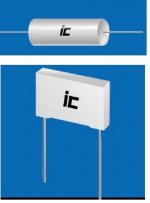Hi all,
I'm just wondering whether it would be better to use axial (rolled) or stacked flat plate polypropylene capacitors for the output caps in the preamp I am making. All the "audiophile" caps out there appear to be axial capacitors, but I would have thought the low inductance of the stacked plate caps would be preferable. What the the advantages/disadvantages of both, if any, and does it really matter?
In case I am not making sense, here is a picture of the two types I am talking about:
Your advice is appreciated.
Greg.
I'm just wondering whether it would be better to use axial (rolled) or stacked flat plate polypropylene capacitors for the output caps in the preamp I am making. All the "audiophile" caps out there appear to be axial capacitors, but I would have thought the low inductance of the stacked plate caps would be preferable. What the the advantages/disadvantages of both, if any, and does it really matter?
In case I am not making sense, here is a picture of the two types I am talking about:
Your advice is appreciated.
Greg.
Attachments
What I know is that the "stacked" Wima MKS2 sounded crappy compared to the "axial" Solen MKP, and even the stacked Wima MKP4 didn't sound as impressive. I'm talking of all-round transparency 🙂
I did wonder too 🙂
I did wonder too 🙂
With extended foil construction, as in any modern cap, it doesn't really make a difference. The inductances will be pretty darn similar.
Foil versus metallized can be important, depending on the specific application.
Foil versus metallized can be important, depending on the specific application.
- Status
- Not open for further replies.
